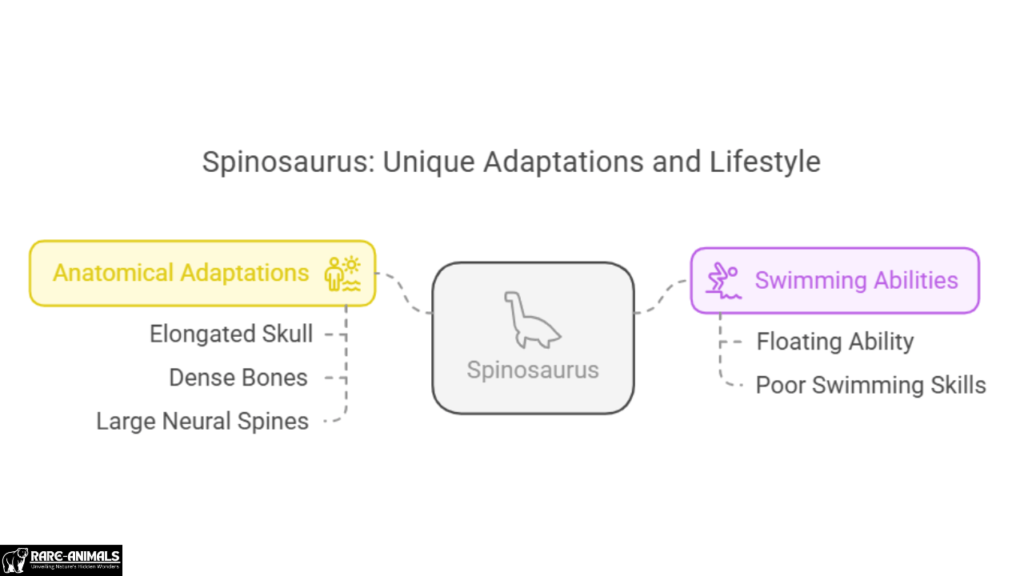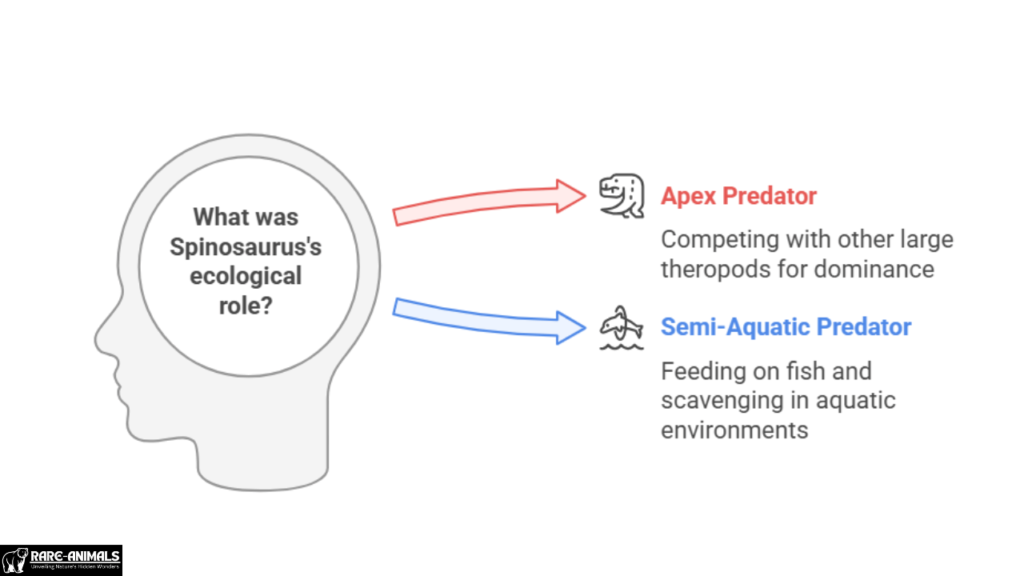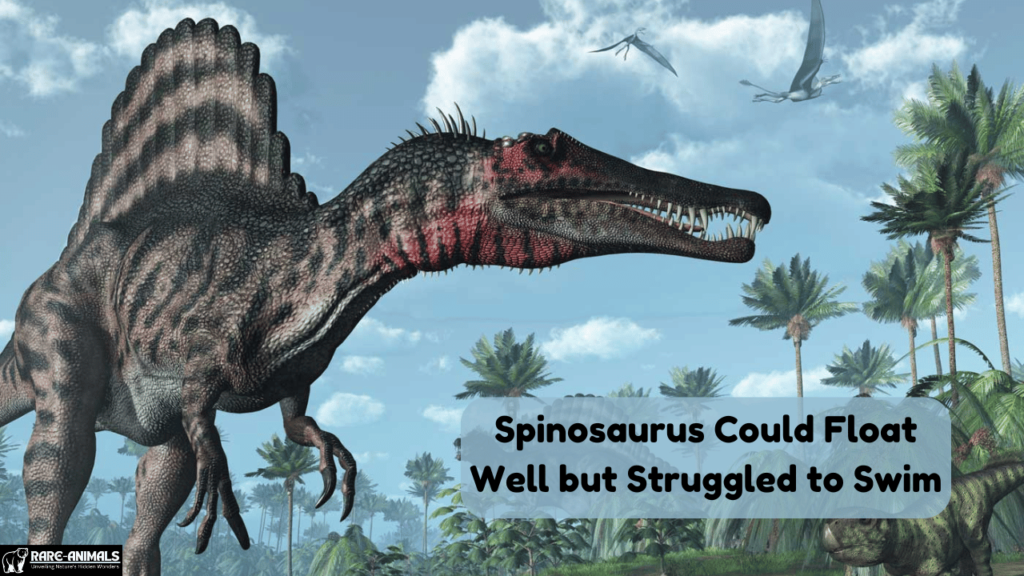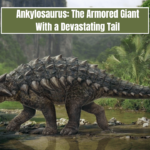Spinosaurus, one of the most intriguing and controversial dinosaurs, has long fascinated paleontologists and dinosaur enthusiasts alike. Recent research suggests that while this giant predator was well-adapted to floating, it may not have been the efficient swimmer once imagined.
With new fossil evidence and biomechanical studies, scientists now propose that Spinosaurus spent much of its time in shallow waters, relying more on buoyancy than strong swimming abilities.
In this article, we explore the latest findings on Spinosaurus’ aquatic adaptations and limitations.
The Unique Anatomy of Spinosaurus
A Semi-Aquatic Predator
Spinosaurus was a massive theropod dinosaur that lived during the Cretaceous period, approximately 95 million years ago. It possessed several adaptations suggesting a semi-aquatic lifestyle:
- Elongated Skull: Similar to modern crocodiles, Spinosaurus had conical teeth and an elongated snout, ideal for catching fish.
- Dense Bones: Recent studies indicate that Spinosaurus had unusually dense bones, which would have aided in buoyancy control.
- Large Neural Spines: The iconic sail on its back remains a subject of debate, but it may have played a role in thermoregulation or display.
Evidence for Floating but Poor Swimming Ability
Recent studies challenge the notion that Spinosaurus was a strong swimmer. While it could float well due to its bone density and body structure, biomechanical analysis suggests that its limbs were not well-suited for powerful swimming.
Unlike modern semi-aquatic animals such as crocodiles, Spinosaurus lacked the tail musculature needed for efficient propulsion in water.

How Did Spinosaurus Navigate Its Environment?
Wading Through Shallow Waters
Given its anatomy, Spinosaurus likely spent much of its time wading in shallow waters rather than actively swimming in deep lakes or rivers. It may have:
- Stalked prey from the shoreline, using its long jaws to snatch fish.
- Relied on ambush tactics, taking advantage of its partially submerged body for stealth.
- Used its buoyancy to stay afloat while conserving energy in still water.
Comparison to Modern Analogues
While initially thought to resemble a giant crocodile in behavior, Spinosaurus may have been more similar to modern herons or storks, which wade through shallow waters to hunt fish. Unlike these birds, however, its sheer size likely limited its agility.

Debunking Myths: Was Spinosaurus an Apex Predator?
Despite its impressive size, Spinosaurus may not have been the apex predator of its ecosystem. Other large theropods like Carcharodontosaurus coexisted in the same region, likely competing for different prey.
Instead of dominating terrestrial environments, Spinosaurus may have occupied a unique niche as a semi-aquatic predator, feeding primarily on fish and scavenging opportunistically.

Conclusion
Spinosaurus remains one of the most fascinating dinosaurs, with its semi-aquatic adaptations setting it apart from other theropods.
While it floated well due to its dense bones, its poor swimming ability suggests it primarily waded in shallow waters rather than actively hunting in deep aquatic environments.
As new discoveries continue to reshape our understanding of this remarkable dinosaur, Spinosaurus remains a testament to the diverse and evolving nature of prehistoric life.
FAQs
1. Could Spinosaurus swim like a crocodile?
No, Spinosaurus lacked the powerful tail muscles needed for efficient swimming. Instead, it likely floated and waded in shallow waters.
2. What did Spinosaurus eat?
Spinosaurus primarily fed on fish, but it may have also scavenged and occasionally hunted smaller terrestrial prey.
3. Why did Spinosaurus have such dense bones?
Dense bones provided buoyancy control, helping Spinosaurus maintain stability in the water.
4. How big was Spinosaurus?
Estimates suggest Spinosaurus grew up to 50-60 feet in length, making it one of the largest theropods known.
5. What new evidence changed our understanding of Spinosaurus?
Recent fossil discoveries and biomechanical studies have challenged previous assumptions about its swimming capabilities, suggesting a more passive aquatic lifestyle.

Alveena is an experienced content writer with a knack for crafting engaging and insightful pieces. She thrives on breaking down complex ideas and presenting them as clear, captivating content that resonates with readers.







